Introduction
Architectural rendering stands at the intersection of artistry and technology, playing a crucial role in the visualization of design concepts before they materialize. This process not only aids architects and clients in comprehending the spatial dynamics and aesthetic qualities of a project but also serves as a strategic tool in decision-making and marketing.
As the industry evolves, advancements in rendering technologies, including the integration of augmented and virtual reality, are shaping how stakeholders engage with architectural designs. With a significant portion of the market dedicated to immersive experiences, understanding the nuances of various rendering techniques—from static images to interactive visualizations—becomes imperative for professionals aiming to enhance client satisfaction and project success.
This article delves into the fundamental aspects of architectural rendering, exploring its significance, processes, and the future trends that promise to redefine the architectural landscape.
Understanding Architectural Rendering: A Fundamental Overview
Architectural rendering 360-degree views involves the creation of both two-dimensional and three-dimensional images that vividly illustrate the design and aesthetics of a building or structure. This vital process is fundamental within the architecture and construction sectors, as it enables stakeholders to experience architectural rendering 360-degree views, allowing architects and clients to visualize an undertaking before its physical realization. Superior visualizations act as an investment in your initiative’s future, enabling detailed insights into materials, lighting, and spatial relationships, thus promoting informed decision-making and creating enthusiasm about what lies ahead.
The intricate details in these illustrations, such as the interplay of light and texture, significantly enhance the emotional impact and realism of the project. The market outlook for 2024 emphasizes a sustained focus on design visualization, propelled by technological advancements, including Ai’s contribution to producing lifelike CG humans that span the uncanny valley and improve realism. Notably, the North American 3D visualization market accounted for 34% of the total market share in 2023, reflecting robust technological infrastructure and high adoption rates across industries.
With roughly 73,313 design companies in the U.S., the significance of efficient visualization methods cannot be overstated. Firms such as Dassault Systemes SE illustrate the economic importance of visualization technologies in the architecture field. Grasping the basics of structure visualization is crucial for recognizing its essential function in the development process and its significant impact on the success of construction endeavors.
The Significance of 360-Degree Architectural Renderings in Design and Marketing
Architectural rendering 360-degree views provide immersive experiences that allow clients and stakeholders to explore spaces as if they were physically present. This ability is especially essential for design presentations and marketing content, enabling more effective communication of a concept’s vision compared to conventional visualization methods. Increasingly, real estate developers leverage 360-degree views to create virtual tours, facilitating remote exploration of properties by potential buyers and enhancing user engagement.
Such innovative approaches not only aid decision-making processes but also instill confidence in projects, as evidenced by a recent case study highlighting that 75% of mobile shoppers using augmented reality (AR) reported satisfaction, leading to an increased willingness to purchase online. This showcases the effectiveness of immersive experiences in enriching the overall client journey. Furthermore, the global 3D visualization market is projected to grow at a compound annual growth rate (CAGR) of 20.08% from 2024 to 2033, reflecting rising demand for such experiences.
As mentioned by Khizar Seo, ‘3D visualization enables a high level of customization, allowing shoppers to see products tailored to their preferences.’ It is essential to consider presentation contexts in marketing; for instance, while white background shots are recommended for online shopping pages, they perform poorly on social media. Hence, architectural rendering 360-degree views emerge as a critical tool in contemporary architectural practices, enhancing engagement and improving client satisfaction, particularly in real estate sales.
The testimonials from clients at J. Scott Smith Visual Designs further emphasize our commitment to excellence, showcasing experiences that not only meet but exceed expectations, thereby reinforcing the value of detailed visualizations in achieving project success. Our visuals not only connect the divide between concept and reality but also generate crucial revenue for construction by attracting early interest and investment. Additionally, we focus on building lasting partnerships with our clients, ensuring that their visions are realized through collaborative efforts.
This commitment is echoed in our clients’ feedback, with one stating, ‘Working with J. Scott Smith Visual Designs was a transformative experience that exceeded our expectations and brought our vision to life.
The Process of Creating 360-Degree Architectural Renderings: Tools and Techniques
The process of producing architectural rendering 360-degree views is multifaceted, beginning with a thorough concept and culminating in immersive representations that capture the essence of the creation. Essential tools in this realm include industry-standard software such as Autodesk Revit and SketchUp, alongside powerful rendering engines like V-Ray and Lumion. These software packages have been acknowledged as leading options for 2024, helping both novices and experienced users in making knowledgeable comparisons, thereby affecting pricing elements based on the complexity and detail of the renderings.
The workflow starts with the creation of a meticulous 3D model, serving as the basis for the architectural layout. Client collaboration and feedback are crucial at this stage, ensuring that the final visualizations align with the client’s vision. The virtual camera is strategically positioned to capture engaging perspectives, enhancing communication with contractors and stakeholders by eliminating misunderstandings in intent.
Attention to detail is critical; thus, lighting, materials, and textures are meticulously applied to enhance the realism of the scene. These tiny details not only contribute to the overall aesthetic but also tell a compelling story about the creation, capturing its essence and intent. Significantly, Archicad distinguishes itself as a reliable option for visualization in architecture, with various features that aid in accurate representation.
Establishing the suitable level of detail in visual presentations is crucial, as it differs depending on the project’s extent and the audience’s requirements. A high level of detail can enhance the storytelling aspect, allowing viewers to fully appreciate the nuances of the design. Ultimately, the processing stage is executed, resulting in a high-quality architectural rendering 360-degree views that effectively convey architectural intent.
A prime example of a visualization engine is FStorm, priced at $25 per month, designed for both professionals and amateurs. FStorm includes a built-in scene converter for compatibility with other 3D applications and is recognized for its high speed and realism, although it is solely available on Windows and supports only 3ds Max. Mastery of these techniques is essential, as they are crucial in creating visualizations that genuinely reflect constructions and resonate with stakeholders, while also identifying potential issues early in the process.
Exploring Different Types of Architectural Renderings: From Static to Interactive
Architectural illustrations can be categorized into several distinct kinds, each fulfilling unique functions within the architectural and planning process. The most prevalent forms include:
- Static images
- 360-degree views
- Animations
- Interactive visualizations
Static visuals, frequently used in presentations and promotional content, provide a clear snapshot of the concept, enabling stakeholders to understand the overall aesthetic swiftly.
In contrast, architectural rendering 360-degree views offer an immersive exploration experience, allowing viewers to navigate around the space as if they were physically present. Animations further enhance this experience by illustrating the flow of space and movement through a building, effectively communicating how users will interact with the environment. However, interactive visualizations represent the forefront of display technology, allowing users to manipulate the view and explore various design options in real-time, significantly enhancing engagement and understanding.
When contemplating outsourcing 3D architectural visualization, it’s crucial to assess the intricacy and quality needs, as these elements directly affect turnaround times. Businesses often consider outsourcing to focus on their core competencies, reduce costs, and access specialized expertise. Particular tasks that can be outsourced include detailed modeling and post-production, which can be time-consuming for internal teams.
For instance, single-family home developments typically take 7-10 days, while detailed multi-family townhouse constructions may require 2-3 weeks. This timeline reflects the efficiency that architectural rendering 360-degree views can provide in expediting design processes. Furthermore, investing in top-notch visuals is essential for making informed choices and generating enthusiasm about the endeavor, acting as a key instrument in conveying the architectural vision.
As the global digital asset management (DAM) market expands—projected to reach $16.18 billion by 2032—62% of architecture firms are adopting cloud-based collaboration tools, reflecting a trend toward improved accessibility and organization in project workflows. This shift highlights the need for architects and designers to utilize architectural rendering 360-degree views as advanced visualization techniques to effectively convey their vision and foster collaboration with clients and stakeholders.
Future Trends in Architectural Rendering: Embracing Technology and Innovation
The architectural rendering 360-degree views landscape is on the brink of a significant evolution, driven by the integration of advanced technologies such as augmented reality (AR), virtual reality (VR), and artificial intelligence (AI). These innovations empower architects to craft interactive and immersive experiences that significantly enhance client engagement. For instance, AR technology enables the superimposition of digital information onto physical environments, facilitating real-time visualization of alterations.
Conversely, VR creates fully immersive spaces where clients can explore and interact with designs prior to construction. This level of detail and customization is essential not only for enhancing realism and emotional impact through architectural rendering 360-degree views but also for facilitating informed decisions throughout the development process. As these technologies advance, they are poised to redefine the standards of visualization, highlighting the need for professionals to stay updated on these developments.
With more than twenty years of experience in providing outstanding 3D rendering services, we recognize that high-quality visualizations are essential in expressing the emotional essence of a project. The global Digital Asset Management (DAM) market is projected to grow from $3.96 billion in 2023 to $16.18 billion by 2032, and with 70% of architecture firms planning to increase their investment in technology over the next year, embracing these tools will be critical for maintaining competitive advantage and delivering outstanding design solutions. Additionally, cloud-based collaboration tools are utilized by 62% of architecture firms, reflecting the industry’s shift towards technology integration.
Moreover, there were 35,621 candidates actively working on licensure, highlighting the growing interest and investment in the architectural profession. Together, these elements illustrate the essential role of high-quality architectural rendering 360-degree views in project development and decision-making, emphasizing that your design is too important to compromise on even the smallest detail.
Conclusion
Architectural rendering is a vital component of the design and construction process, offering a bridge between conceptualization and realization. The exploration of various rendering techniques, including:
- static images
- 360-degree views
- interactive visualizations
underscores their importance in facilitating client engagement and enhancing decision-making. As the industry continues to evolve, the integration of advanced technologies such as:
- augmented reality
- virtual reality
- artificial intelligence
is set to redefine the standards of architectural visualization, fostering deeper connections between architects and their clients.
The significance of high-quality renderings cannot be overstated; they serve not only as marketing tools but also as critical instruments for communication and collaboration among stakeholders. By providing detailed insights into spatial dynamics, lighting, and materials, architectural renderings empower clients to visualize projects comprehensively, ultimately leading to greater satisfaction and project success. As demonstrated by the robust growth projections for the 3D rendering market, the demand for immersive and interactive experiences will only continue to rise, highlighting the necessity for architects to embrace these innovations.
In conclusion, as the architectural landscape becomes increasingly competitive, the mastery of rendering techniques will be paramount for professionals aiming to deliver exceptional results. Understanding the nuances of these technologies and their applications is essential for architects striving to push the boundaries of design and ensure that every project not only meets but exceeds client expectations. The future of architectural rendering is bright, and those who adapt will undoubtedly lead the charge in transforming the way we visualize and experience architecture.
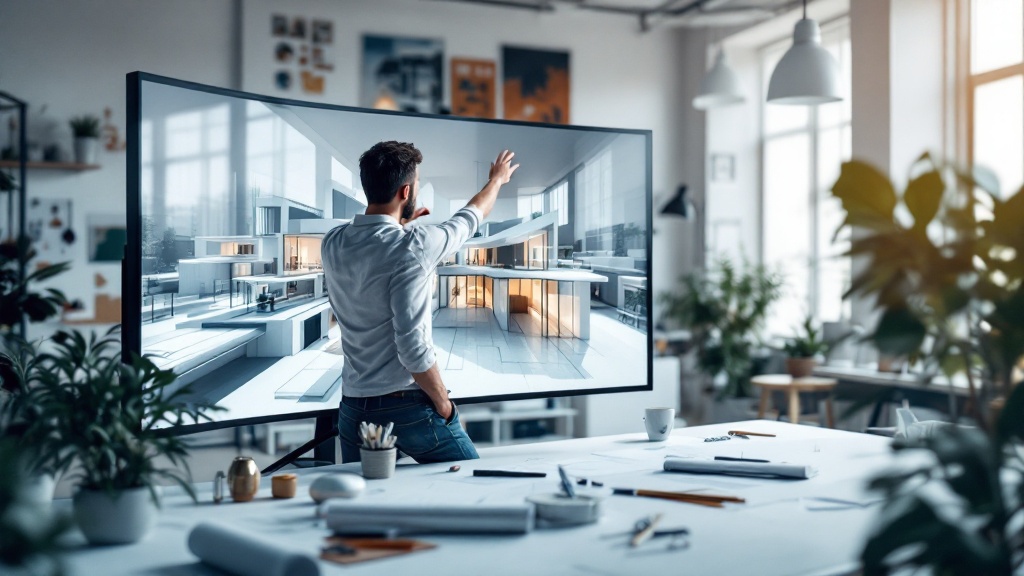
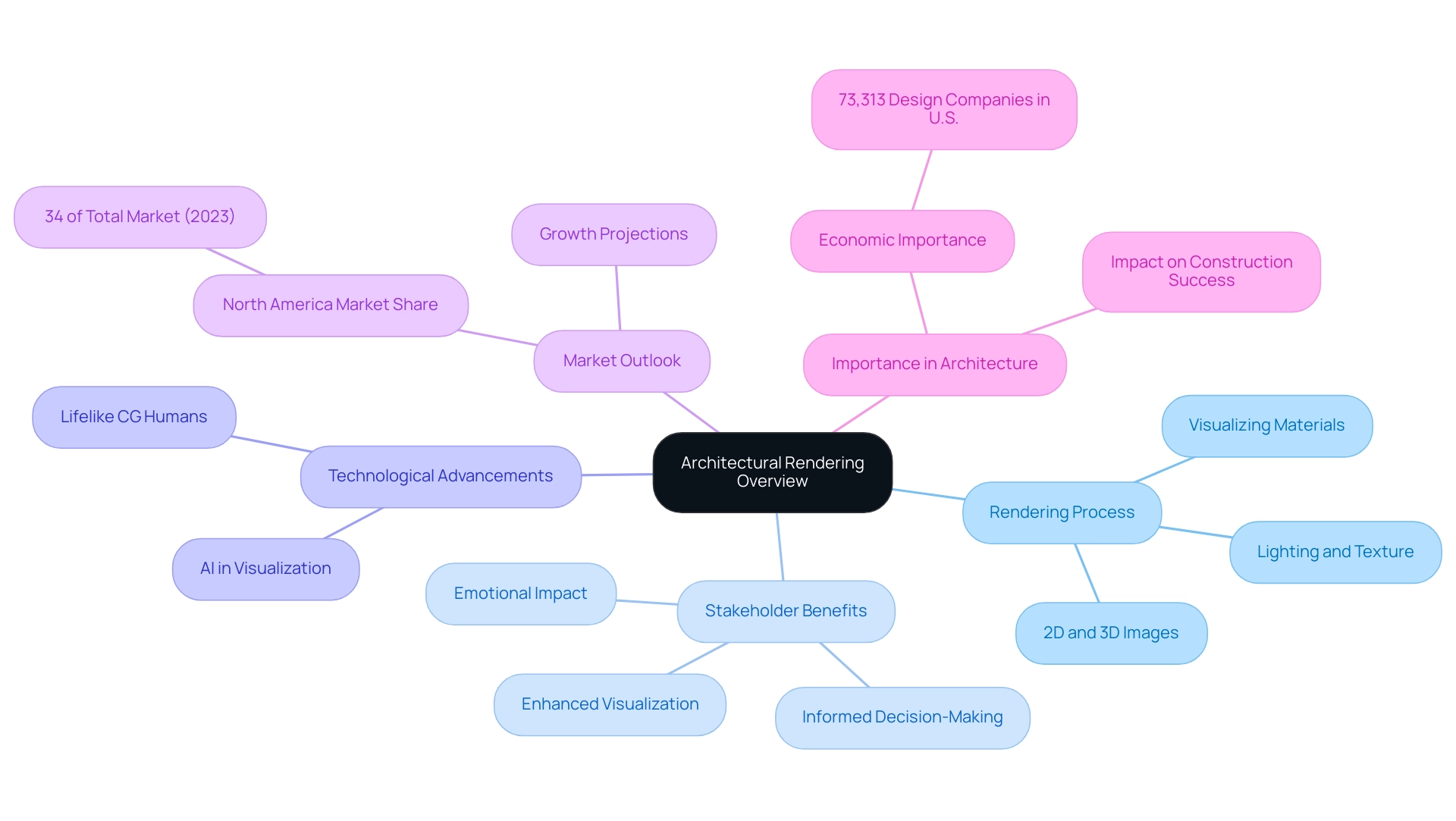
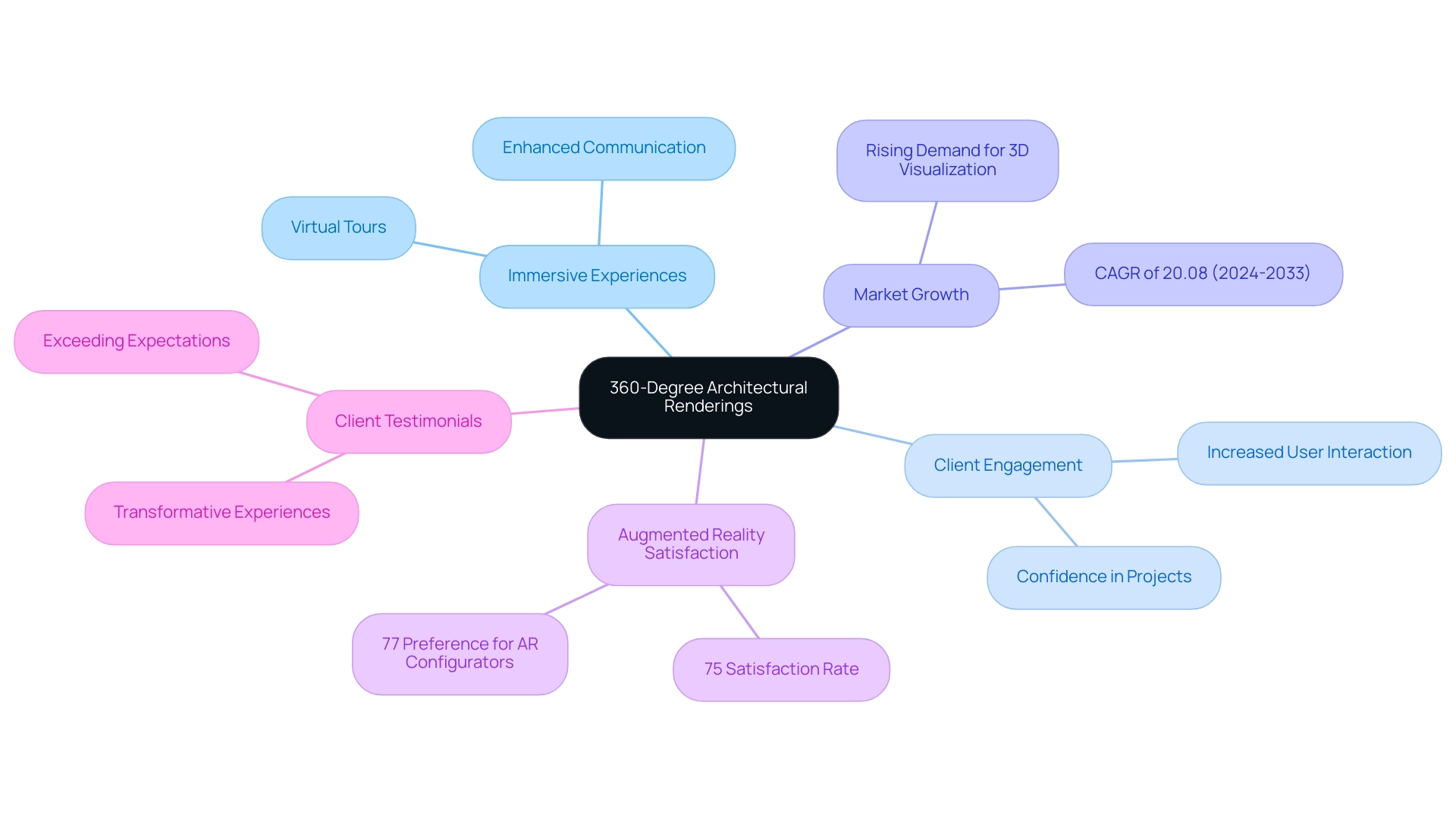
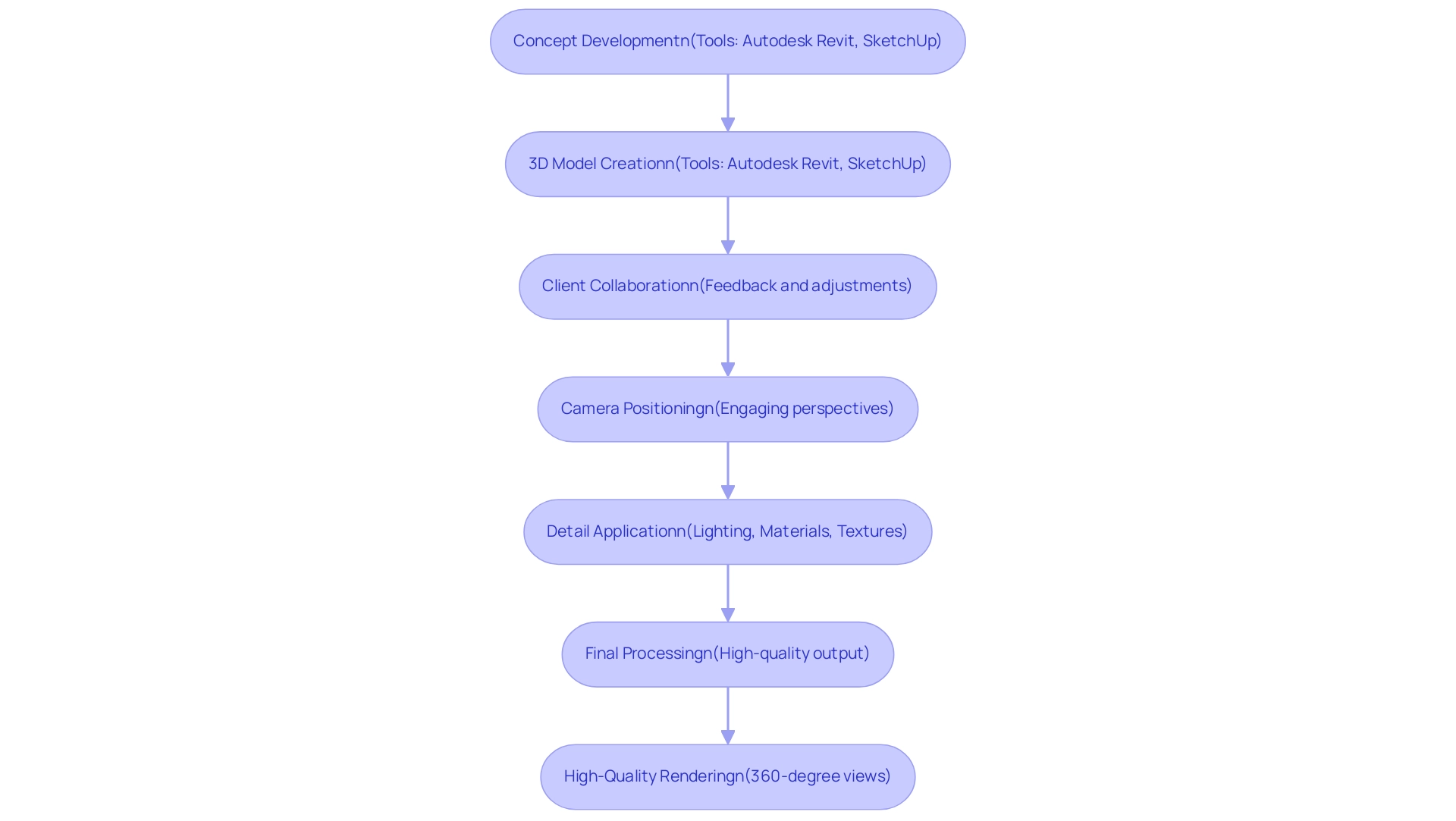
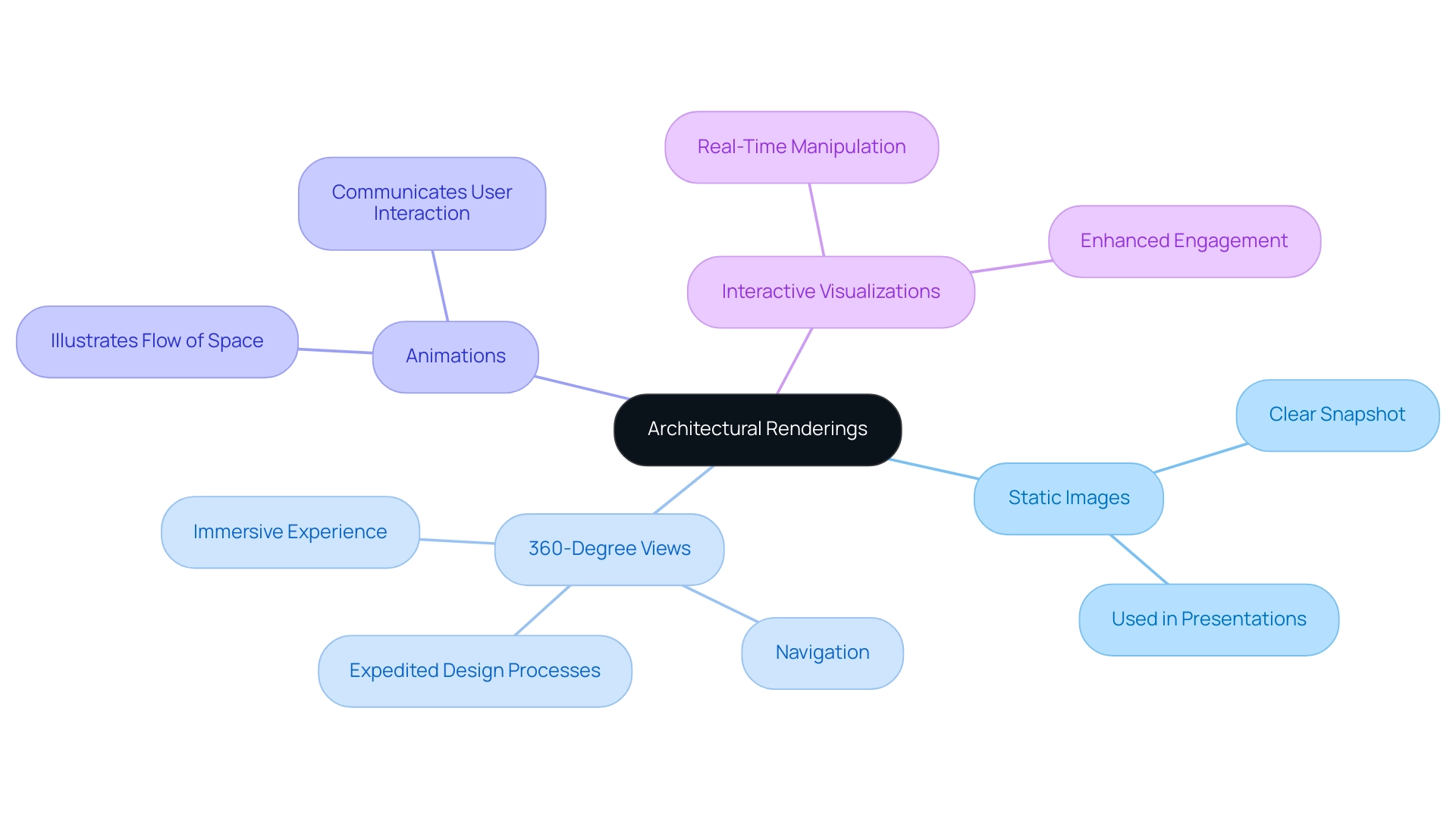
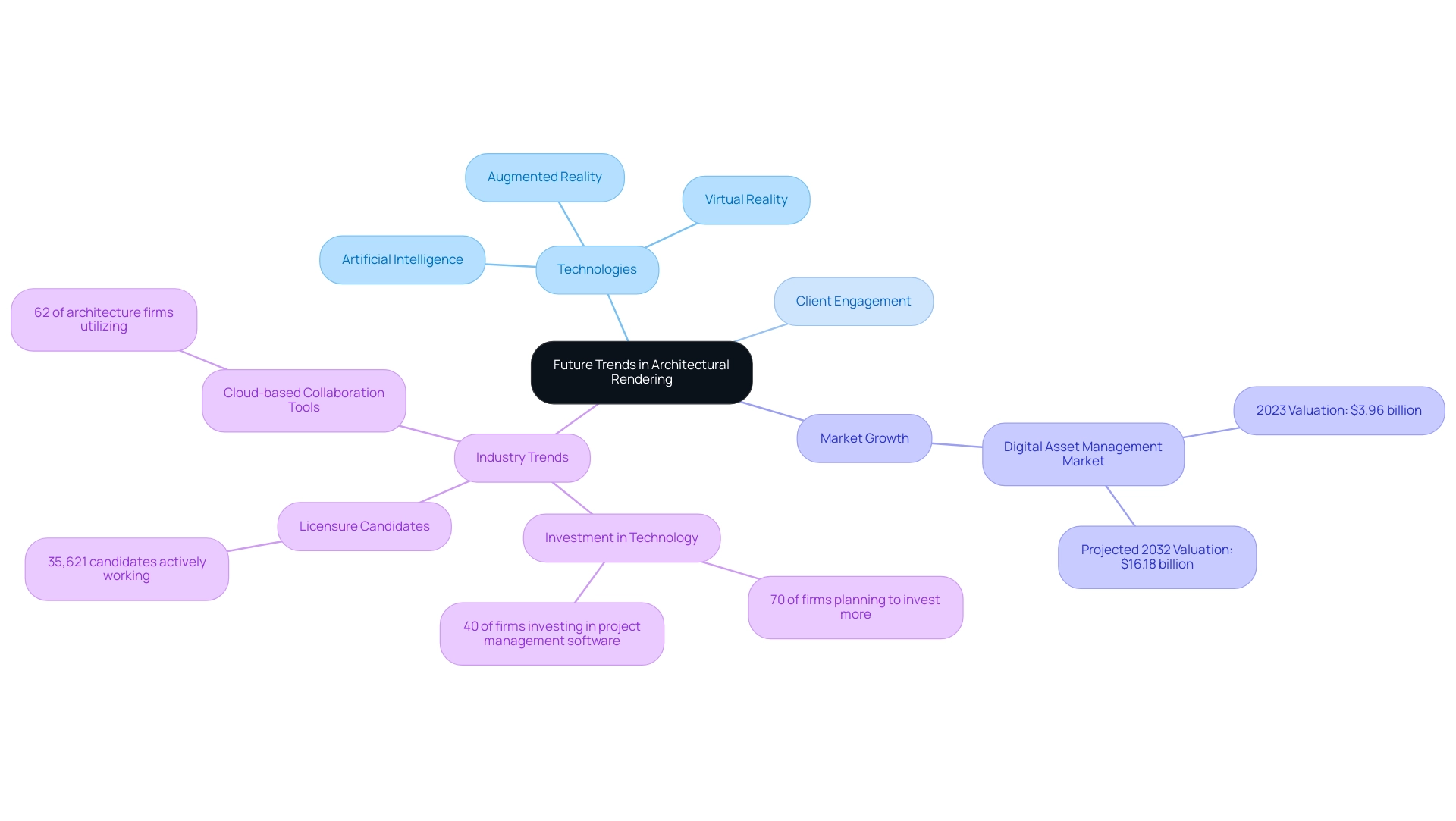
0 Comments